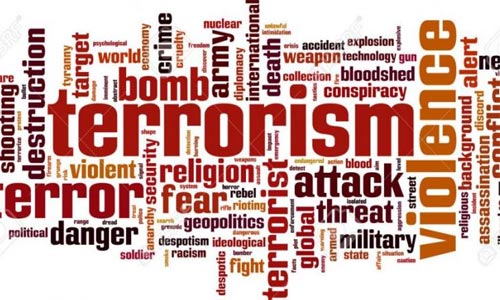The number of cases of armed violence including terrorist activities increased to 24,202 worldwide in 2016, a rise of 25 percent year-on-year and dozens of times more than a decade ago, according to Statics from Jane’s Terrorism and Insurgency Center in the UK.
Lack of socioeconomic opportunities, marginalization and discrimination, poor governance, violations of human rights and the rule of law have been listed in the Plan of Action to Prevent Violent Extremism as reasons behind the nurturing of violent extremism.
The increase of violent extremism and terrorist activities are widely felt in Afghanistan, which has borne the brunt of terrorism and insurgency in recent years, mainly following the withdrawal of US forces. The large-scale sacrifices of Afghan soldiers and civilians in the wake of terrorist activities and the endless sufferings of the public show that terrorist groups seek to continue their deadly activities.
Although Kabul government and its international allies have been fighting terrorism strongly for years, the root of terrorism was not addressed. Currently, the issue of terrorism has been highly complicated for many reasons. First, there are a number of terrorist groups fighting for multiple objectives. It seems that mercenary members of insurgent groups have surpassed that of ideologues. They are simply paid to fight. It is also believed that a number of individuals who are involved in systematic crimes such as smuggling country’s mineral resources are affiliated with insurgent groups. For instance, a number of mine workers in Afghanistan were killed by unknown armed men. It indicates that smugglers and even irresponsible armed groups have hands in gloves with insurgents. Hence, the bulk of terrorist groups are most likely to fight for financial interests. If such groups integrate into the government’s body, they will be able to orchestrate broader illegal activities.
Second, there seems many mysterious hands to back terrorist groups. That is to say, the reinforcement of terrorist groups, mainly the Taliban insurgents in Afghanistan, arouses one’s doubt about their supporting sources. It is not only the insurgents’ strong and modern weapons, but also their organized plans, strong intelligence, and military tactics. Since a number of terrorist groups are used as pawns in political games, they are trained and equipped with heavy weapons and instruments. Members of retired militaries and intelligence of countries will be among the militants for training them, providing them with information and organizing attacks. Thus, the issue of terrorism is more complicated than one imagines. If this category is integrated in the government’s body, it will be highly perilous and their masters will get access to the top secrets of their rival countries.
Third, the financial resources of terrorist groups are still ambiguous for Afghanistan. In other words, Afghan government and its international allies need to do a thorough research about the financial resources of terrorist groups and make it clear what percentage of financial support do different groups get from illegal mining and smuggling of country’s mineral resources, what is the percentage of support from narcotic drug, and what are other financial resources.
Fighting terrorism should not be reduced to only killing insurgents while turning a blind eye to the root causes, ideological supports and financial resources. To ponder the aforementioned issues, Afghan government needs to refer to think-tanks and researchers and establish more research bases for unraveling the complexity of the issues.
The next solution, also proposed by Plan of Action to Prevent Violent Extremism, is engaging earlier to address the drivers of extremism through such actions such as eradicating poverty, empowering youth and strengthening strategic communication on the internet and social media.
Ratifying Counter-Terrorism and Security Act 2015 in February, 2015, the UK laid legal bases for education program to counter extremism in the strategy for terrorism prevention which prompted those potentially susceptible to influence of extremism to receive education of their own accord. Thus, Afghan government has to prevent from closing schools. Those youths who do not attend schools will remain a tempting prey for terrorists as their ignorance increases their vulnerability to insurgency.
The last solution which seems to me very effective is recruiting locals as militias, a plan which was proposed by US officials and was put into practice in some parts of the country but has been discarded. In Ghazni province of Moqor district, which was one of the most insecure districts, the local militias have played very effective role and turned Moqor to one of the secure districts. Since local militias are operating without uniforms and know more about those who have been recruited by the Taliban and their whereabouts in their areas, they are able to fight them in more effective way. In short, the root cause of terrorism must be tackled and their financial resources must be cut off so as to counter terrorism successfully and defeat the armed insurgents.
Home » Opinion » Counter-terrorism Needs an Eagle Eye
Counter-terrorism Needs an Eagle Eye
| Hujjatullah Zia

